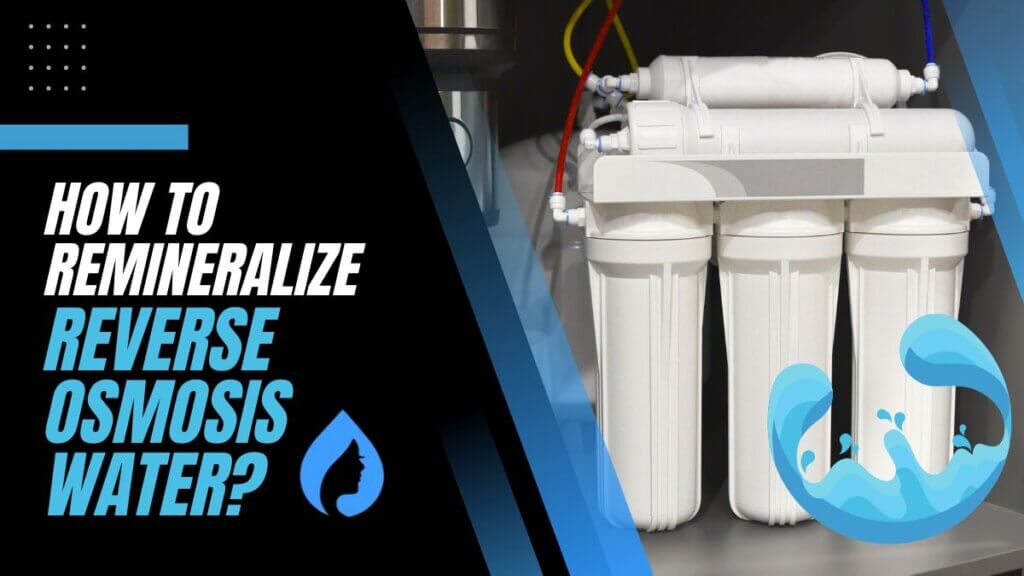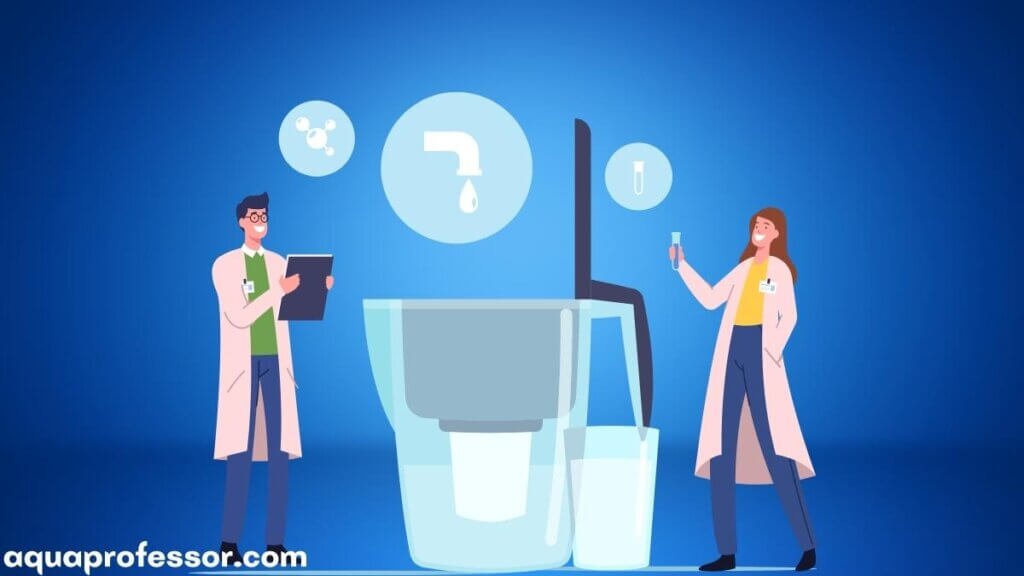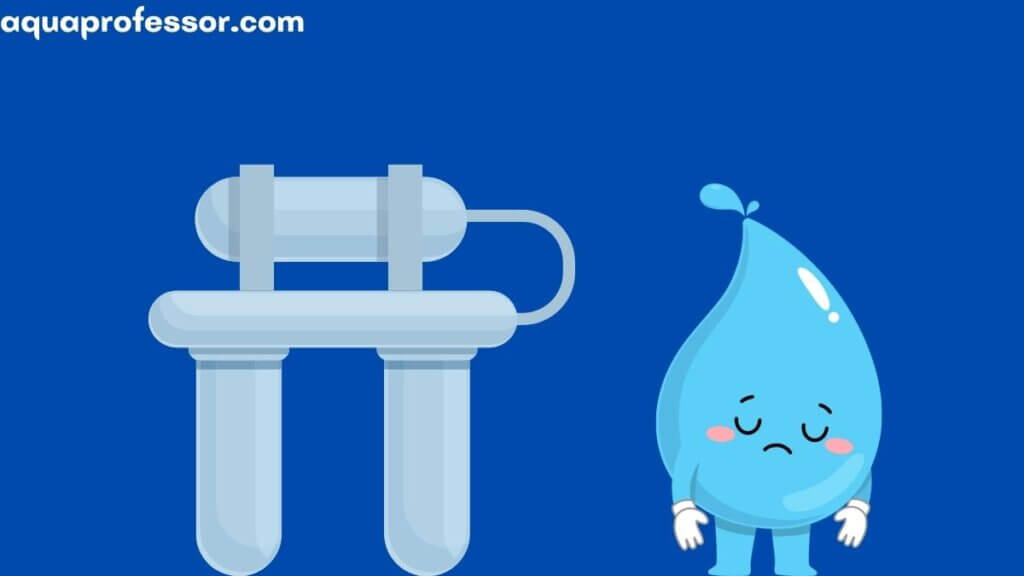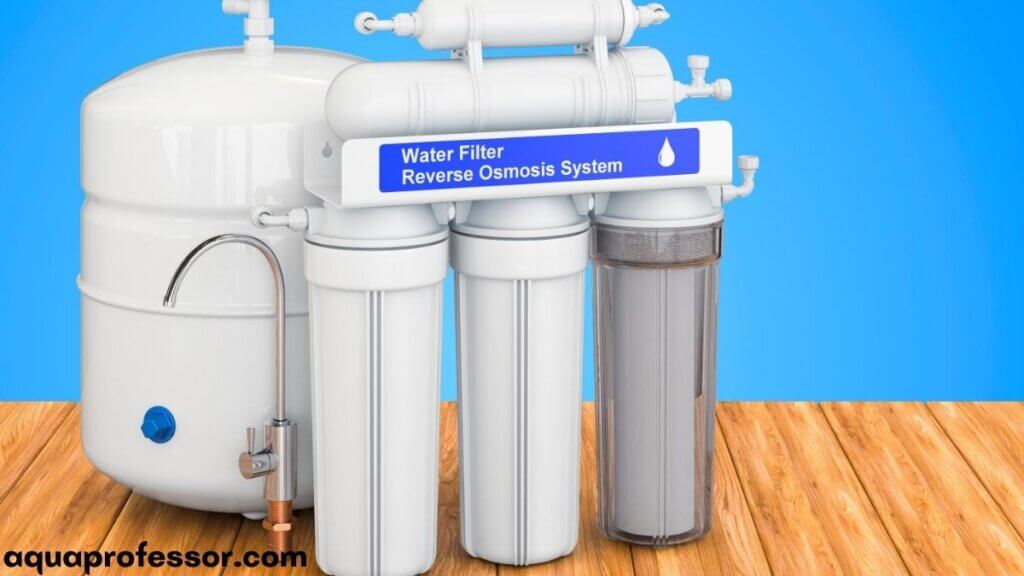
In this actionable tutorial, I’ll be answering how to remineralize reverse osmosis water in 5 different methods.
Why do I need to remineralize RO water, I hear you ask?
Don’t take my words, here is what Suresh Rohilla, Senior Director at the Centre for Science and Environment, says about Reverse Osmosis Treated water, courtesy Fit Quint:
"Removing everything from water, including minerals essential to our body functioning, can have negative long-term effects, health-wise."
Hence, adding minerals back to water treated by reverse osmosis becomes crucial. There are many ways to add minerals to water, and this article will introduce you to these methods and give you an insightful comparative analysis of all the mentioned methods.
Keep reading to find out more!
How to Remineralize Water After Reverse Osmosis: Method Comparison Table
| Method | Efficiency | Type of Minerals Added | Cost involved |
| Adding mineral drops | Very Effective | They may add complete mineral content. They may also be effective in adding Iron, in particular to water. | A 2 Fl Oz Pack of mineral drops may cost around $11.13 |
| Adding mineral tablets | Very Effective | These are effective in adding complete mineral content as well. In particular, they may be used to add to the magnesium content of water. | A pack of 100 mineral tablets may cost you around $15.95 |
| Adding Himalayan Sea Salt | Moderately Effective | They provide a rich and varied range of mineral contents to the water. Specifically magnesium, calcium, and potassium. | A 5 Pound pack will cost you $14.99 |
| Using Alkaline Pitcher | Effective | They add a complete variety of minerals to the water. | An alkaline pitcher filter may cost you around $35 |
| Using Remineralizing Filter to your RO System | Very Effective | These also add to the complete and varied mineral content of water. | An average remineralizing filter may cost you around $21 |
Also Read: The Epic Comparison Between SpringWell and Pelican Whole House Filtration Systems
- How to Remineralize Water After Reverse Osmosis: Method Comparison Table
- Why & How To Remineralize Reverse Osmosis Water: Myths Debunked
- Stupidly Simple Methods To Remineralise RO Water In Detail
- What Essential Minerals Are Removed In The RO Filtration Process?
- What Is Not Removed By Reverse Osmosis Systems?
- How To Remineralize Reverse Osmosis Water: Frequently Asked Questions
Why & How To Remineralize Reverse Osmosis Water: Myths Debunked
According to the CDC, one in every two children under the age of five is suffering from mineral deficiency. Their food and water sources lack a certain required amount of minerals essential to maintain good health.

Now, you may wonder, this CDC research must have indicated about underprivileged nations of the world. If I have the resources to access filtered water, I can’t suffer from mineral deficiency, right? Wrong.
One of the most common and efficient ways of water treatment is Reverse Osmosis. RO systems can’t differentiate between harmful contaminants (like heavy metal impurities) and beneficial minerals (like calcium and magnesium); it removes all kinds of contaminants from water in the filtration process.
Thus the water becomes demineralized, and consumption of demineralized water may have some negative effects like harm to metabolism and damage to intestinal mucous membrane.
Here’s The Truth
Many minerals such as calcium and magnesium are present in our tap water that can add to our regular mineral requirements. They help maintain healthy bones and blood pressure and regulate muscle and nerve function.
Tap water may also contain some amount of salts, potassium, and phosphorous necessary for functions like fluid balance, supporting heart function, influencing growth and repair, etc.
Also Read: How to reduce excess TDS From Drinking Water [Methods Backed By Experts]
So we need to ensure that these vital minerals are added back to the water we consume. And guess what? You don’t have to break your head or bank for this. There are various ways to remineralize reverse osmosis water, some of which are so simple that you won’t have to do anything extra.
To remineralize water and make it better, all you need to do is add back the lost minerals. Minerals can also be added to naturally mineral deficient water, such as tap water, well water, and bottled water.
Minerals like calcium, potassium, magnesium, sodium, and zinc are considered essential minerals. This is because the body can not produce them on its own and needs them from sources outside (i.e., minerals from food and water).
These minerals can be added back to RO filtered water by osmosis remineralization using a mineral filter, alkaline filter, adding mineral salts, drops, green blends, green powders, and mineral tablets.
Also Read: The Ultimate Comparison Between Waterdrop and Frizzlife RO Filters [2024]
Stupidly Simple Methods To Remineralise RO Water In Detail

How to Remineralize Drinking Reverse Osmosis Water: Adding Mineral Drops
Minerals drops are a great way to bring back the healthy mineral contents of your water that you may have lost during the RO Filtration Process. Mineral drops are mineral solutions that can be added in small quantities to water used for drinking and other consumption purposes. They are very effective in enhancing the overall mineral content of water.
Most trace mineral drops contain a mixture of many minerals. However, there are also mineral drops with one particular mineral, such as iron which can be used to add to water to resolve a particular mineral deficiency.
These minerals drops are easy to find, and the procedure to use them is pretty simple. The drops come in a bottle with a dropper. Just take a few drops of the mineral solution in the given dropper and add them to your glass of water. You may also add it directly to the tank for water supply.
Mineral drops are one of the cheapest methods people use to remineralize RO water.
Adding Mineral Tablets
Mineral tablets are a comparatively tasteful method of adding minerals to the water. Most mineral tablets are designed to add effervescent to your water. Mineral tablets add minerals to water and make it taste better.
They are available as complete mineral supplements or single mineral supplements like Magnesium Tablets. They are easy to find and can be bought from your nearest convenience store. Mineral tablets prove to be of great value for remineralizing large amounts of water.
Also Read: Do you find your filtered water tasting weird? I've found 6 possible reasons why
How to Remineralize Reverse Osmosis Water With Himalayan Salt?

Mineral salts such as Himalayan salt or rock salt are another cost-effective way to restore the mineral contents of your demineralized water. Himalayan mineral salt is rich in mineral content such as magnesium, calcium, and potassium.
Even a single pinch of Himalayan mineral-rich salt can significantly improve the mineral content of treated water such as RO Filtered Water. Apart from being cost-effective, Himalayan salt provides a lot of health benefits and can help with weight loss, decrease hypertension, and enhance lung function.
To make remineralized water with pink Himalayan salt, fill a glass jar 1/4 full with Himalayan salt, fill it halfway with water and leave it to sit for up to 24 hours. This creates sole water, which is said to help balance the body’s negatively and positively charged ions, improving overall health.
Keep in mind that Himalayan pink salt is different from regular table salt. The two must not be confused as adding table salt to water will increase the sodium content of your water which may not be good for human health.
Using Alkaline Pitcher
Alkaline pitchers have filter cartridges responsible for adding minerals to the water. Alkaline pitchers are an inexpensive way to remineralize RO Filtered Water.
All you need to do is store your water in the alkaline pitches for a while, and it will replenish the mineral contents of your water, making it mineral-rich and healthy to consume.
Alkaline pitchers don’t require much effort. They don’t need to be installed along with the mainline water supply. If you’re looking for a low-effort way to remineralize RO water, alkaline pitchers are the way to go.
With alkaline pitcher filters, you might need to invest in cartridges. The cartridges in alkaline pitcher filters need replacement every 1-3 months, depending upon the usage.
Also Read: 9 Practical Alternatives To RO You Should Check Out [NEW List]
Using Remineralizing Filter in your RO System

Regular RO Filter systems have three stages: pre sediment filter, activated carbon filter, and a semipermeable membrane. These regular RO Filters can be upgraded to remineralizing RO Filters by simply adding a remineralizing filter to them without changing the entire system.
These remineralizing filters add minerals (like calcium) to the RO Filtered water and significantly enhance their mineral content, making it mineral water. You may find these filters at your convenience store or order them from online shopping sites.
These filters are good for adding complete minerals back to the water. The remineralizing filter is added in the stage after the activated carbon filter and a semi-permeable membrane.
The water after regular RO Filtration is passed through the post mineralization filter, where all the desired minerals are added back to the water. A remineralization filter can produce alkaline water right from your faucet, removing the need to add mineral drops later.
In the process of remineralization using filters, you might need to invest in the remineralization post-filter cartridges. These post-filter cartridges may cost you around $80, but this is an investment for healthy drinking water.
Also, these filters may require regular replacement after every six months. And if you decide to buy a standalone filter, ensure that it has its housing and connection systems and is not meant to be used in a filter system.
Also Read: How To Fix RO Constantly Draining [NEW Guide]
What Essential Minerals Are Removed In The RO Filtration Process?

As mentioned earlier, the RO filtration process causes the loss of essential nutrients and minerals from water. This causes the quality mineral content of water to go down. Here are the minerals that are lost during RO filtration:
What Is Not Removed By Reverse Osmosis Systems?

The filtration system in Reverse Osmosis works by removing the heaviest substances present in the water, making it contaminant-free water.
This way, they help remove most minerals, heavy metals, and natural salt from water. Sometimes, though, some substances may be present that may have a molecular weight lower than that of water. In such cases, the RO system may fail to remove these substances.
These substances include Herbicides, pesticides, fungicides, organic compounds, gases like hydrogen fluoride, certain amounts of chlorine, etc. Such impurities make water unsafe for drinking, and such water should be further treated well to avoid and prevent numerous diseases.
RO is also ineffective in removing small molecules, similar to that of water molecules. Such molecules get easily dissolved in water and are hard to filter out. They form a large electron cloud which prevents them from being filtered out during the reverse osmosis process.
Most dissolved organic molecules may also pass through the filter except for the activated carbon filter, which effectively removes trace amounts of such organic molecules.
How To Remineralize Reverse Osmosis Water: Frequently Asked Questions
What did the World Health Organisation say about RO water?
A PDF being circulated claimed that the World Health Organization had issued a warning against drinking RO water. According to the PDF, The World Health Organization claimed that water purified by RO lacks mineral elements, also called “Energy Content,” and said that long-term consumption of such minerals lacking acidic water could be very unhealthy. The PDF, however, is no longer available.
Is RO water harmful to health?
Water treated by RO is free from impurities and minerals and can be termed dead water (since it has just pure water). It is neither harmful nor beneficial to health.
What is TDS and how much TDS level in water is healthy?
Total Dissolved Solids or TDS is the concentration of solid particles present in drinking water. TDS level that falls in the 50-150 is considered appropriate for drinking water.
What are 3 reasons why minerals are necessary?
The three main reasons why minerals are important are:
1) They help maintain fluid osmolarity inside and outside the cells
2) They help strengthen the bones and teeth
3) Are involved in food energy metabolism
How do RO systems remove minerals?
RO systems work by passing the water through a semipermeable membrane. This membrane helps to separate the heaviest particles. Since minerals are heavier than water, they are removed and only pure water is left behind.
Adarsh is a Health & Nutrition Sciences graduate with expertise in environmental health. He is associated with ventures like Glacier Fresh Filter and Simpure Filter Systems. Through Aqua Professor, he intends to provide helpful information to every home to help them make smarter decisions.

Thank you for this informative read. We are in the midst of deciding our water filtration processes in a new place. We are in a very hard water area, and most of our neighbors have gotten a salt based water softener. I initially thought we’d get this, and also a tankless RO system by Frizzlife w the Alkaline filter, under the sink in the kitchen (tight space). The softener we liked was the Springwell Salt based.
Later on the Springwell website I noted that one can also get a whole house filter + salt based softener. I’m thinking about doing this instead, along with FVS initially planned Frizzlife tankless RO under the sink.
1) a) Do you think this having a whole house water filter, and then a secondary RO + alkaline filter for drinking water is overkill? b) Do you think that the drinking water this generated will be nutritious and safe?
2) what’s your opinion on the Springwell whole house water filter? They are unable to provide any testing data for verifying what all they filter out and to what level…They claim that all the components are NSF certified and meeting certain nsf standards, but they have no test data to share on this.
Would love your thoughts on this. It’s so refreshing to see a scientific and clearly reasoned approach to these seemingly basic questions, answers to which are surprisingly difficult to find online. Thank you.
Thanks for your feedback. I would say: you should first test your water to know the type of contaminants you need to remove.
To answer (1), I would recommend this guide by CDC: https://www.cdc.gov/healthywater/drinking/home-water-treatment/water-filters/step3.html
As far as SpringWell is concerned, I couldn’t find their NSF certifications either. It would be better if you consider different brands like Pelican (https://info.nsf.org/Certified/DWTU/Listings.asp?CompanyName=pelican&) before making your final choice.
Here is my comparison guide on springwell and pelican in case you are interested: https://www.aquaprofessor.com/water-treatment/springwell-vs-pelican/
Hope this helps!